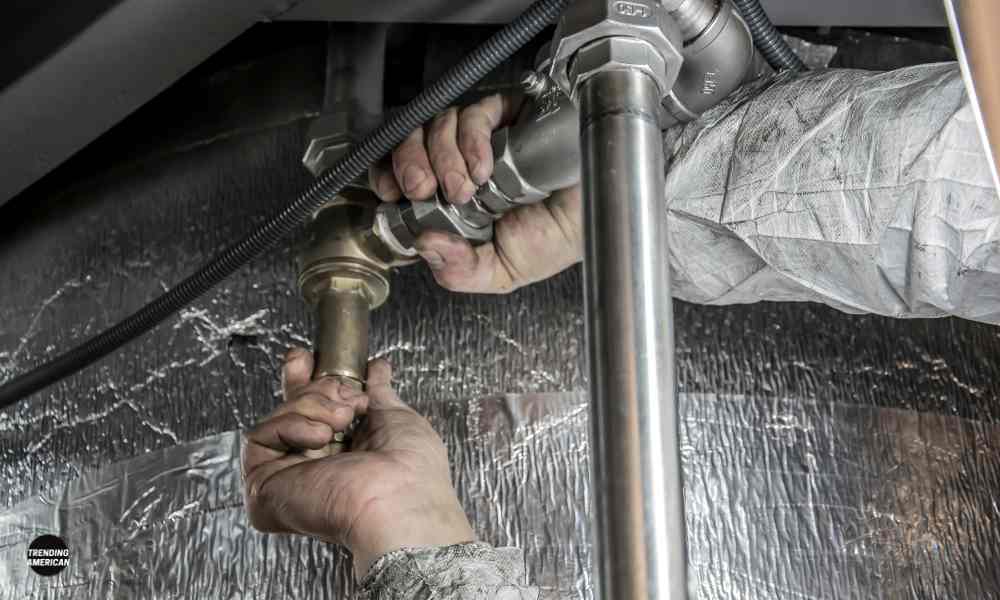Types of Pipe Fittings
There are many types of pipe fittings, each serving a particular purpose. Pipe fittings are used in plumbing to join pipes together or to alter the direction of a pipe. They are made from a variety of materials, including brass, copper, iron, plastic, and steel. Some common types of pipe fittings include: -Elbow: An elbow is a type of fitting that is used to change the direction of a pipe. It is available in both male and female threads. -Tee: A tee is a type of fitting that is used to join three pipes together. It has one inlet and two outlets. -Cross: A cross is a type of fitting that is used to join four pipes together. It has four equal-sized openings. -Coupling: A coupling is a type of fitting that is used to join two pipes together. It has two openings of equal size.
Types of Pipe Fittings
There are many different types of pipe fittings available on the market today. Here is a brief overview of some of the most common types:
Elbow Fittings: Elbow fittings are used to connect two pieces of pipe together at an angle. There are 90-degree elbow fittings, 45-degree elbow fittings, and 180-degree elbow fittings available.
Tee Fittings: Tee fittings are used to connect ThehomeImproving three pieces of pipe together. They can be used to create a T-shaped connection or to split a piece of pipe into two smaller pipes.
Cross Fittings: Cross fittings are similar to tee fittings, but they have four openings instead of three. They are used to connect four pieces of pipe together.
Coupling Fittings: Coupling fittings are used to connect two pieces of pipe together end-to-end. There are several different types of coupling fittings available, including slip couplings, swage couplings, and compression couplings.
Cap Fittings: Cap fittings are used to seal the end of a piece of pipe. They can also be used to create a cleanout opening in a drain line.
Materials Used in Pipe Fittings
There are many different types of materials that can be used in pipe fittings, including metals, plastics, and composites. Each material has its own unique properties that make it suitable for certain applications.
Metals are the most common material used in pipe fittings. They are strong and durable, and can withstand high temperatures and pressures. Common metals used in pipe fittings include stainless steel, copper, brass, and aluminum.
Plastics are another popular choice for pipe fittings. They are often lighter than metals, and can be molded into complex shapes. Some common plastics used in pipe fittings include PVC, ABS, and polyethylene.
Composite materials are a combination of two or more different materials. They are often used to create pipes with special properties, such as resistance to corrosion or abrasion. Composite materials used in pipe fittings include fiberglass reinforced plastic (FRP) and laminated wood composites (LWC).
Advantages and Disadvantages of Pipe Fittings
There are many different types of pipe fittings available on the market today. Each type has its own advantages and disadvantages that you should be aware of before making a purchase.
Pipe fittings are used to connect two or more pipes together. They can be made from a variety of materials, including metal, plastic, and rubber. Different types of fittings will have different advantages and disadvantages.
Metal pipe fittings are usually the strongest and most durable option. However, they can be more expensive than other types of fittings. Metal fittings can also rust over time if they are not properly cared for.
Plastic pipe fittings are often the cheapest option available. However, they are not as strong as metal fittings and may not last as long. Plastic fittings can also be damaged by sunlight or chemicals more easily than metal fittings.
Rubber pipe fittings offer a good combination of strength and durability. They can be more expensive than plastic fittings but are usually less expensive than metal ones. Rubber pipe fittings may not be suitable for all applications, however, as they can degrade in sunlight or high temperatures.
How to Choose the Right Pipe Fitting
There are many different types of pipe fittings available on the market today. Choosing the right fitting for your needs can be a daunting task. Here are a few things to keep in mind when choosing the right pipe fitting:
1. Know the type of pipe you are using. There are many different types of pipes available, each with their own unique characteristics. The most common types of pipes used in plumbing applications are PVC, copper, and galvanized steel.
2. Determine the size of the fitting you need. Pipe fittings are available in a variety of sizes, from 1/8-inch to 4 inches. The most common sizes used in plumbing applications are 1/2-inch and 3/4-inch fittings.
3. Consider the application you will be using the fitting for. Pipe fittings can be used for a variety of applications, such as connecting two pieces of pipe together or attaching a hose to a faucet. Choose a fitting that is designed for the specific application you will be using it for.
4. Think about the material the fitting is made from. Pipe fittings are available in a variety of materials, including brass, plastic, and stainless steel. Choose a material that is compatible with the type of pipe you are using and that can withstand the conditions it will be exposed to (such as high temperatures or chemicals).
Conclusion
Pipe fittings come in a variety of shapes, sizes and materials to suit a wide range of applications. Hopefully this article has helped you to understand the different types of pipe fittings available and their uses, so that you can choose the most suitable fitting for your needs. If you’re still not sure which type of fitting is right for you, or if you need any further information, please don’t hesitate to contact us. We’re always happy to help!


